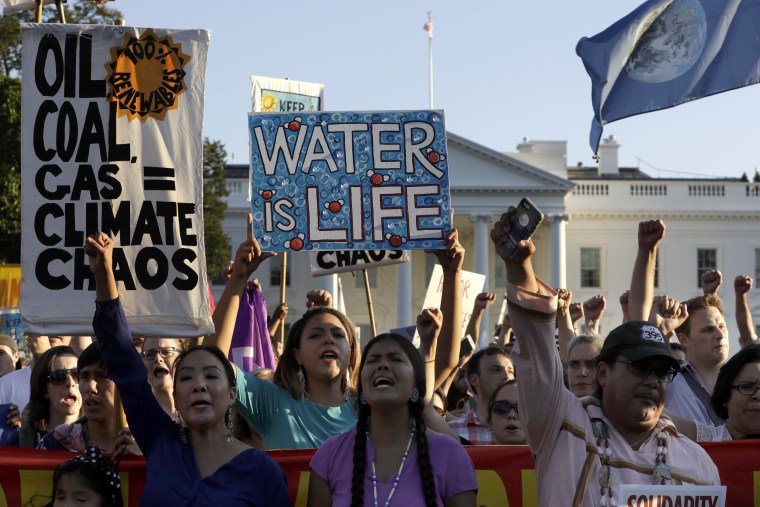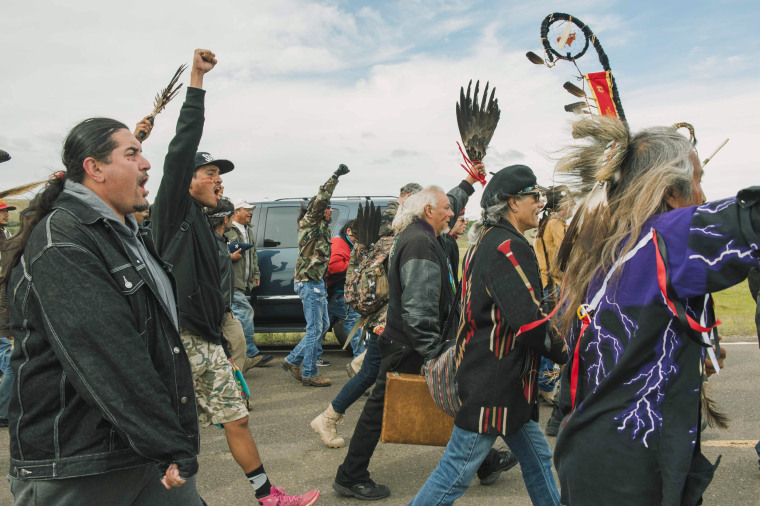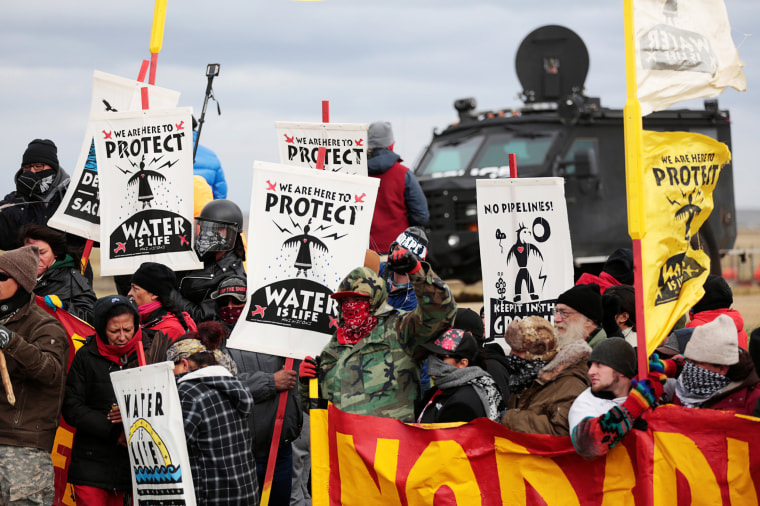North Dakota protests aimed at stopping a 1,170-mile pipeline have swelled over the last four months. Hundreds of demonstrators have been arrested, and the Oceti Sakowin Camp in Cannon Ball, North Dakota, has drawn thousands more, including Native Americans, environmental activists and celebrities.
But what makes the project so controversial? How did an oil pipeline project in rural North Dakota become the largest Native American protest movement in modern history? What have the demonstrations achieved?
Related: N. Dakota Pipeline Protesters Shut Down Capitol
Here's what to know about the pipeline, and the protests around it.
What is the Dakota Access pipeline?
The Dakota Access Pipeline, which is already more than 70 percent completed, is a $3.7 billion project that would transport 470,000 barrels of oil a day across four states. The oil would flow from the fields in Stanley, North Dakota, near the Canadian border, to Patoka, in southern Illinois, where it would link with other existing pipelines.
Who is behind the pipeline?
The project is financed by Energy Transfer Partners, which claims it will bring millions of dollars into local economies and create an estimated 8,000 to 12,000 construction jobs.
Why are Native Americans so against it?
Members of the Standing Rock Sioux tribe see the pipeline as both an environmental and cultural threat to their homeland. They say an oil spill would permanently contaminate the reservation's water supply and that construction of the pipeline would destroy sacred sites where many of their ancestors are buried.
According to Standing Rock Sioux Chairman Dave Archambault II, an oil spill would permanently contaminate the Missouri River, a major water source for his reservation and for millions living in cities downstream. He has called for re-rerouting the pipeline.
What are the chances of an oil spill, something Native Americans fear?
Experts are divided on the safety of oil pipelines. In a 2012 study of America's 2.5 million miles of oil and natural gas pipelines, ProPublica reported that more than half of the country’s pipelines were at least 50 years old. Critics say aging pipelines and lack of strong federal oversight by the Pipeline and Hazardous Materials Safety Administration increase the chance for an oil or natural gas spill.
Energy Transfer Partners and supporters of the project say pipelines have safeguards against leaks and are a far safer option than transporting oil on trucks and trains.
Where do labor unions and environmentalists stand?
The pipeline is opposed by virtually all major environmental groups, who compare the project to the Keystone Pipeline — which was ultimately stopped by President Obama last year. Democratic members of Congress have also urged the president to halt the project.
The pipeline has divided labor unions. Last month, five of the nation's largest unions sent the White House a letter demanding the president "stand up for American workers" and allow the pipeline to move forward. Other unions have stated their support for the tribe.

Have the protests been effective in stopping the pipeline's progress?
The protests forced a halt in construction in late August after the Standing Rock Sioux sued the U.S. Army Corps of Engineers. The tribe argued that it did not adequately consult with them before granting Energy Transfer Partners fast-track approval in July, as required under the National Historic Preservation Act. The Army Corps of Engineers said it did not oppose the suspension.
Last month, a federal appeals court sided with the company. The Obama administration intervened, asking Energy Transfer Partners to "voluntarily" halt construction on all surrounding private land, pending a final environmental review by the Army Corps, the Justice Department and the Interior Department. The company rejected that request and resumed construction within 48 hours.

What's next for Dakota Access?
Energy Transfer Partners continues construction on all privately owned land up to the Missouri River. In an internal company memo obtained by NBC News in September, CEO Kelcy Warren said the company remained "committed to completing construction." Warren called the tribe's concerns over the pipeline's impact on its water supply "unfounded."
The tribe says it remains committed to stopping the pipeline and has called on the United Nations Human Rights Council for help. The ultimate decision on the project's fate lies with the U.S. Army Corps of Engineers. It is not clear when the Corps is expected to issue its environmental review.
President Obama weighed in on the pipeline for the first time Tuesday in an interview with NowThis, saying the government was closely monitoring the situation on the ground. "My view is that there is a way for us to accommodate sacred lands of Native Americans, and I think that right now the army corps is examining whether there are ways to reroute this pipeline," said Obama.

